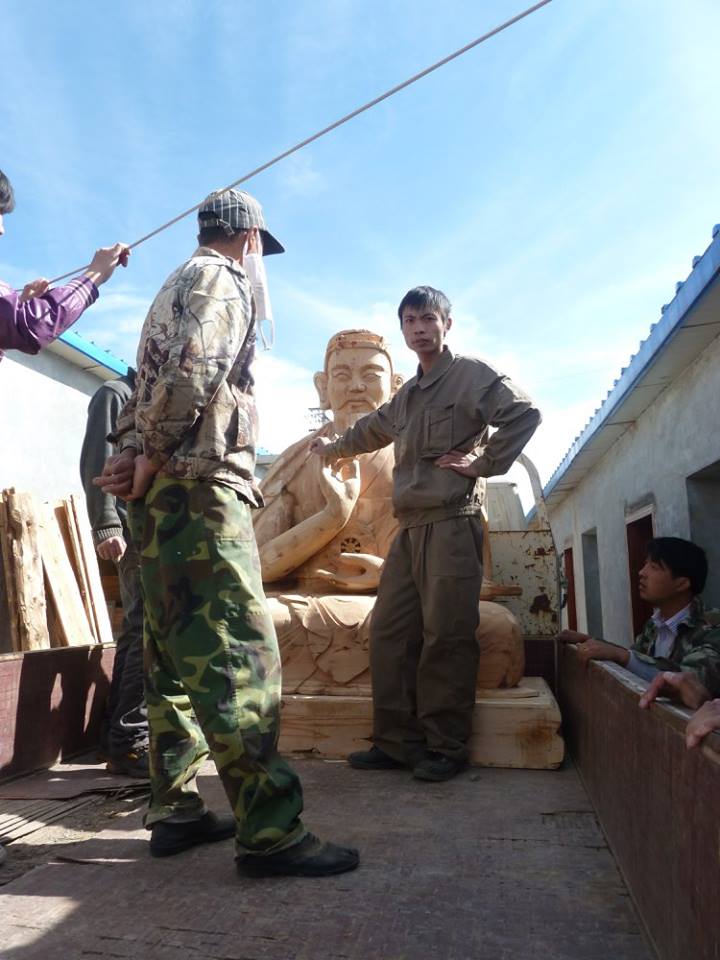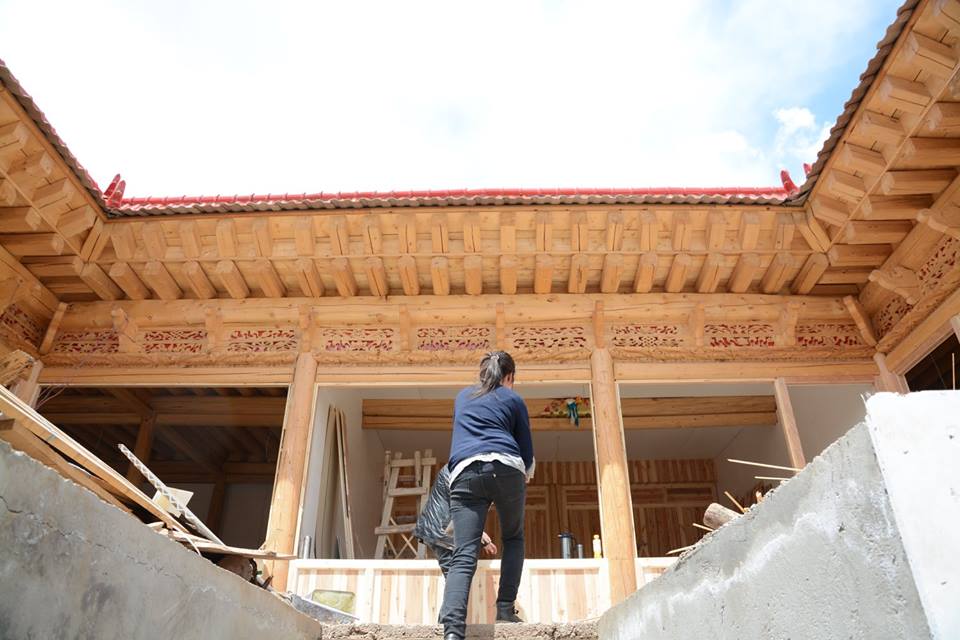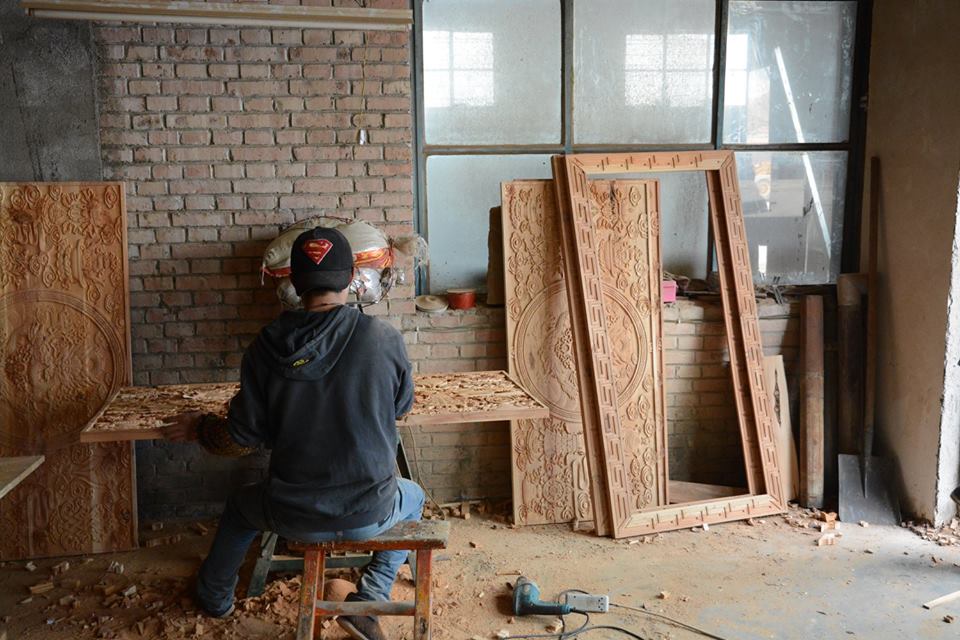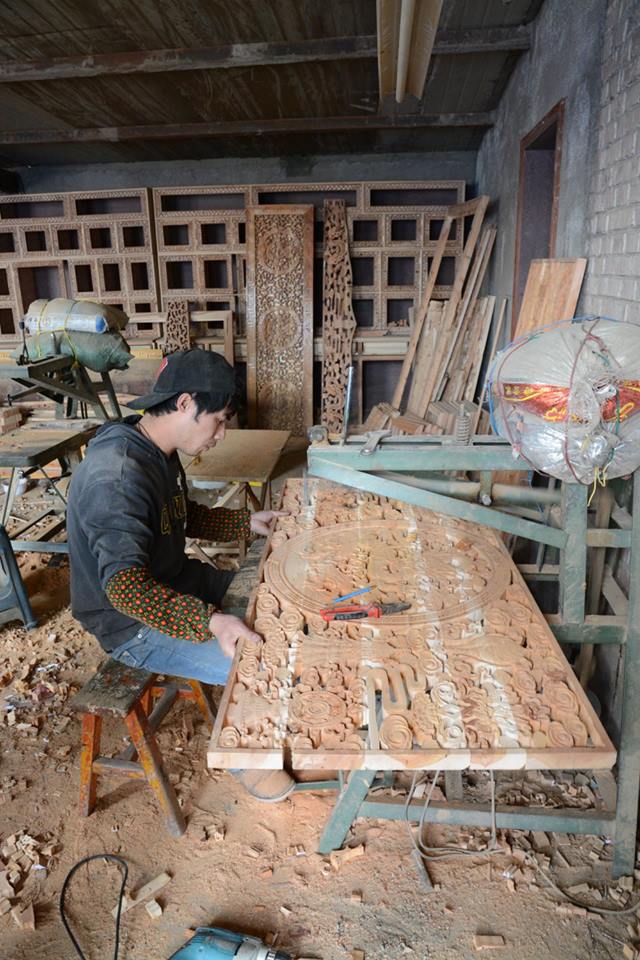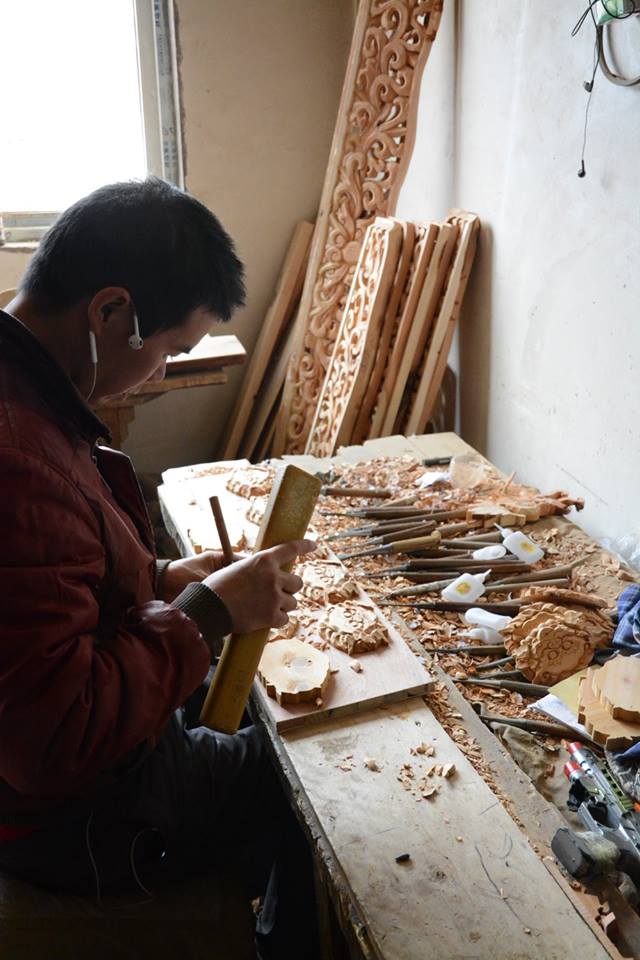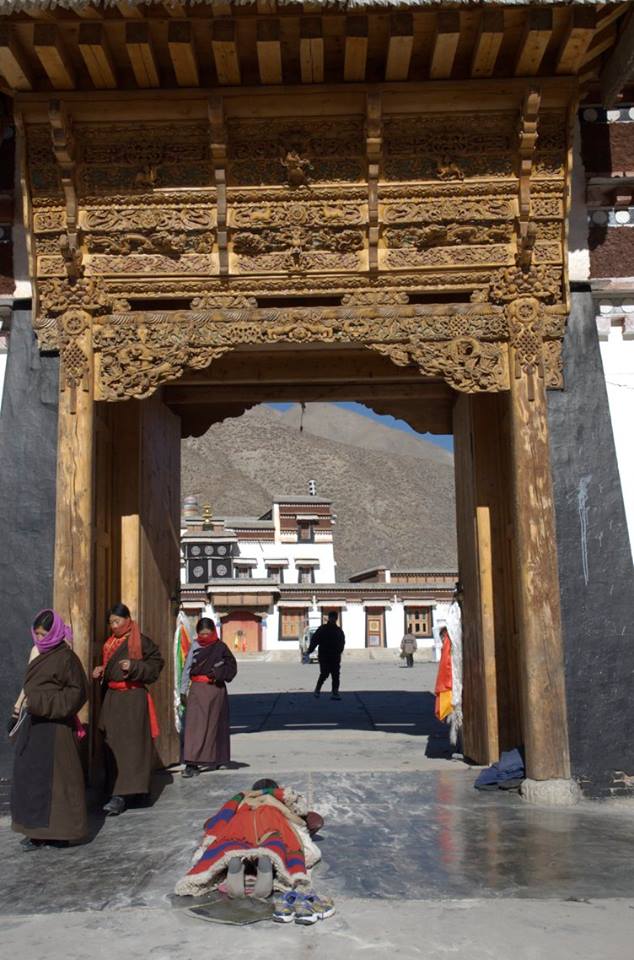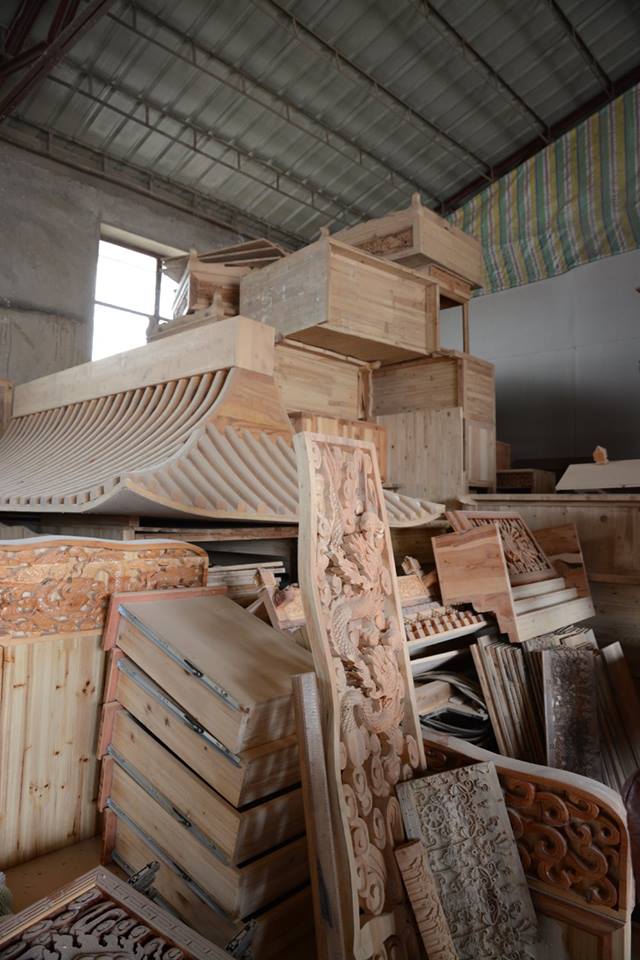Woodworkers come from Afar
/When I first went to Labrang ten years ago, I noticed a thriving trend for traditional wood carving, most obvious in doors. The Monastery, of course, had very elaborate doors, many of them new, all done in traditional form. Many new houses also had these doors, and when Dechen and Yidam got a small courtyard house near the Monastery in 2007, though they didn’t invest in a fancy door, they had furniture made and became acquainted with the carpenters and wood carvers. The most important woodwork enterprise was in Tso, the prefectural town, some 60 KM from Labrang, and from early on, it served the area in a wide radius; monasteries, individuals, shops and restaurants. All the wood workers were Chinese, and this one, Gang, had come all the way from Zhejiang Province, hundreds of miles away. When I visited for the first time his was a small workshop on the edge of town, but a few years later, he had moved into a much bigger space and brought with him a growing team. In 2012, we commissioned him the woodwork inside the Norlha guesthouse and he showed us his work on a new residential area that was opening up on the road towards Ritoma. The new
constructions were all based on the old models; large wooden gates, the more elaborate, the more the status, a central courtyard, the rooms huddled around it. The modern touch was overpowering, with expanses of glass verandas to capture the sun, red brick and in the worst cases, tiles. The woodwork was extensive in the houses we saw, lining whole walls, with carved pillar tops and more carved panels between beams and pillars, proudly shown off by the maker, and all finished in shiny varnish. Gang’s workshop was vast, with fellow artisans carving in a room full of finished pieces; altars, thrones, tables, and much more. I noticed they all worked in the same manner as the woodcarvers at Norbulingka, will their set of self made tools lying before them. It was also similar to what I had seen in Kanazawa on the West Coast of Japan, and the patterns and styles were also very close. Gang explained that he had come ten years earlier, when everyone was busy renovating monasteries. Work was plentiful, so he gradually enlarged his business and brought fellow workers from his village in Eastern China, where he returned each year for a few months around New Year. He came from a family of wood carvers in a village where everyone had been a wood carver as far as anyone could remember. With modernization, people had lost interest in the traditional, so he had looked further West to where he could continue to practice his skills and found his place among Tibetans. Tibetans in the nomad areas of Amdo seemed to have traditionally limited their activity to herding, farming or trading. Though woodcarvers and builders were and still are plentiful in Central and Eastern Tibet, in Amdo, they seemed to be drawn from other ethnic groups and pockets of Chinese can be found deep in nomadic areas, where they were brought over a hundred years ago to build monasteries. Such a group, Buddhists and Tibetan speaking, built the wooden structure of the Norlha workshop. Gang invited us into his living room, where a whole sheep, wrapped in glad wrap, lay between the coffee table and the television. He lay a plate of fruit and nuts before us, which Norzin quickly cleaned out, and we discussed the plans for the Norlha Guesthouse.
